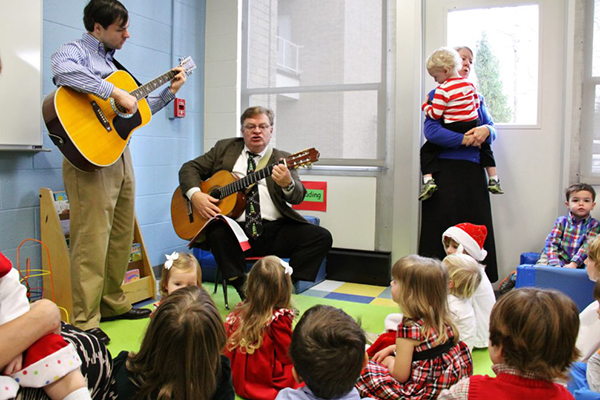Which can you more likely recite over Sunday lunch after worship: a point from the sermon or a refrain from a hymn?
Congregational singing is a hallmark of Baptist worship. But it’s not just a chance to stand up and stretch, a warmup for the sermon or an interlude before the offering.
The poetry put to music in a good hymn worms its way into our subconscious, and because so many hymn texts are based on Scripture, or at least on theological tradition, we literally sing our faith.
The importance of hymn singing to teach theology and cultivate a worship culture motivated Ken Wilson’s 32-year ministry in music at Knollwood Baptist Church in Winston-Salem, North Carolina.
When he came to Knollwood in 1986, children didn’t really know hymns. That mystified Wilson because he grew up singing hymns and knew virtually the whole book.
Pondering the difference, he realized that all of his childhood he sang four to five hymns at opening Sunday School assembly, then three to four more in worship Sunday morning, more on Sunday night and Wednesday night, and at youth events.
“I sang at least 20 hymns every week of my life, from infancy,” he says. That’s about a thousand hymns a year.”
Learning hymns
Wilson’s response was to create a schedule to make sure young people at Knollwood learned a similar number of hymns, a process he eventually named “Hymns for a Lifetime.”
It started slowly, simply letting children stay in “big church” through the second hymn, rather than leaving after the first.
Then, taking a cue from friend and musician Michael Hawn, he figured out a way to sing with every child in the church every week.
He recreated opening assembly in children’s Sunday School, starting promptly at 9:45 with hymn singing. Teachers were happy to “give up the time” because kids didn’t really arrive en masse until 10. He figured he could do the first verses of 10 hymns in 15 minutes.
And, by the way, kids started getting there at 9:45 so they could sing.
Teaching children
“I didn’t ask the children’s permission,” Wilson recalls. “I didn’t ask if they liked singing hymns, or wanted to sing hymns. I just smiled a lot, and we sang hymns. I was teaching the children that hymn singing is simply what we do at Knollwood.”
Eventually, he created a hymn book with 60 hymns, color-coded in three groups of 20, with the goal to learn 20 hymns each year.
Children who memorized 60 hymns in three years became members of the “Hymns for a Lifetime All-Star Team,” with their names engraved on a plaque in the choir room. It became a big deal among the children to be listed on the plaque.
Each of the 60 names that adorn it strikes a chord of humble pride in Wilson. He says educators sometimes criticize him for expecting too much of children. But, he thought, first graders can recite 25 radio jingles, so why not infuse that memory power with meaningful music?
And the kids love it.
“They cannot wait to sing,” he says. “Each Sunday after we sing hymns, it’s favorite hymn time, and they’re jumping up and down to pick their favorite. No one ever complains about being tired of the same 60 hymns. They know what they love and love what they know.” (BNG)






Share with others: